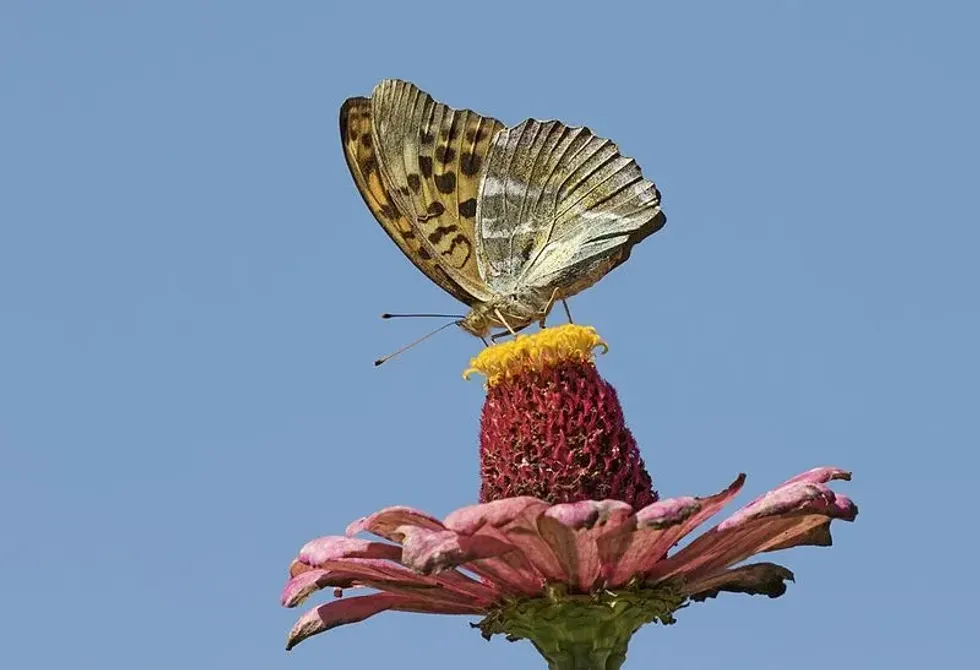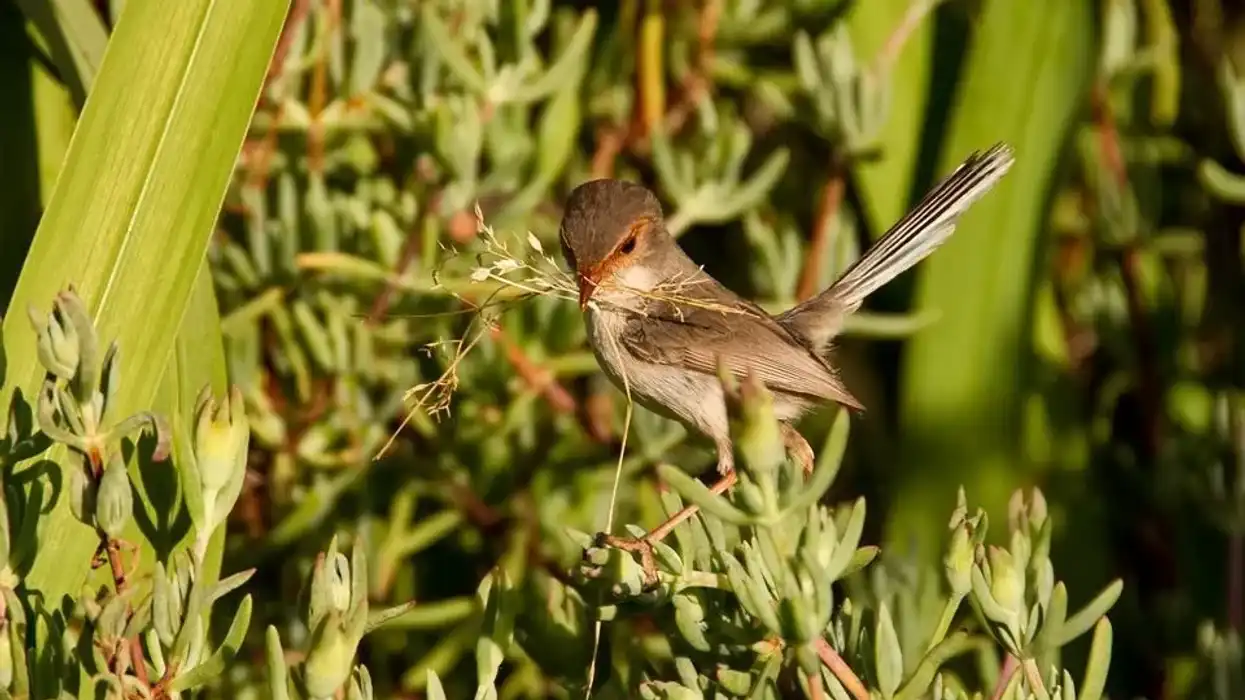The silver-washed fritillary (Argynnis paphia) is a small butterfly that has many interesting facts.
The name of this species derives from its silver wash on both forewings and their distinctive orange markings at the base of each wing. This coloration helps to hide it from predators in tree and shrub foliage during midday hours when these butterflies are most vulnerable because their wing colors match leaves so well.
This rare butterfly is a beautiful member of the family Nymphalidae.
It has silver-colored wings with soft, light brown, and orange spots on its body that make it stand out from other butterflies. Its life span in nature can range anywhere between eight weeks to 16 months depending on where they live.
Researchers have found these beauties mostly flying in the North of England and Ireland near the distribution of woodlands or grassy fields because their larvae feed primarily off plants such as dandelions and clovers.
Females are dark brown with silver spots and shades of violets on their wings and males have three color patterns, black, purple, or white.
These fritillaries feed off plants like clovers and violets which they get from visiting flowers for nectar while hovering over them to drink droplets of liquid sugar water called honeydew.
Since these insects rely heavily upon plant life as food sources, it is important to keep your gardens or their favorite tree free from pesticides so there will always be an abundant supply left over for wildlife.
The larvae feed on a range of low plants including nettles, hogweed or giant cow parsley as well as herbs such as tansy or sweet vernal grass.
The chemicals in these plants make these butterflies distasteful to predators. The silver-washed fritillary is one of the prettiest butterflies and it's not just for looks.
The butterfly has a distinctive scent that mimics female monarch butterflies to attract males from far away.
For more relatable content, check out these puss moth facts and peppered moth facts for kids.
Silver-Washed Fritillary Interesting Facts
What type of animal is a silver-washed fritillary?
The silver-washed fritillary (Argynnis paphia) is a type of butterfly native to England.
What class of animal does a silver-washed fritillary belong to?
The silver-washed fritillary belongs to the class Insecta, just like many other insects including a puss moth.
How many silver-washed fritillary are there in the world?
We don't know but we can say that there are millions of them in England and Wales.
Where does a silver-washed fritillary live?
They breed and overwinter along riverbanks, meadows, fields, pastures, and roadsides. In summer you can find them feeding on nectar from flowers such as milkweed plants or goldenrod near ponds or streams with their wings half open to drink up some of the sun's rays before taking flight.
What is a silver-washed fritillary's habitat?
Silver-washed fritillaries live across a wide area including woodlands in England and Wales as well as Ireland's grassy hilltops near its flower patches such as those covered with wild daffodils.
Who do silver-washed fritillaries live with?
The silver-washed fritillary is a unique butterfly with distinctive markings. In the summer months, this insect prefers to live among shrubs, hedgerows, hedges, or woodlands with other insects like imperial moths for shelter from predators like birds.
How long does a silver-washed fritillary live?
This butterfly usually lives for between eight weeks and 16 months. This fritillary can die before its life cycle has finished if it has been eaten by a predator or starved due to lack of food in its habitat like woodlands.
How do they reproduce?
Male silver-washed fritillaries have a distinctive orange spot on their hindwings while females do not. Male silver washed fritillary butterflies will use this distinguishing color to find their mate, by looking for the female with an identical marking that has yet to be fertilized.
Males of this species are known as primary pollinators because they actually perform mating duties rather than just serving food resources as other insects would such as bees or hummingbirds.
What is their conservation status?
The silver-washed fritillary has the conservation status of Least Concern. However, habitat conservation is important for this species.
Silver-Washed Fritillary Fun Facts
What do silver-washed fritillaries look like?
Silver-washed fritillaries have a variety of streaks of bright colors which can be found on their wings. The silver-washed fritillary is mostly yellow with several shades of orange and red along the edges.
The silver-washed fritillary is a type of butterfly with a wingspan of about 2-2.5 in (5-7 cm).
Silver-washed fritillary male butterflies have an orange and black pattern on their upper wing surfaces, while the underside is typically light brown or gray in coloration. The silver streaks of waxy coating on these fritillaries give them their name because they reflects sunlight so well when you look at the insect from different angles.
How cute are they?
Silver-washed fritillaries are small, delicate butterflies. The wings have yellow and underside brown colors on them with white dots that look like stars in the night sky. The silver-washed fritillary male rides close to flowers waiting for sweet juice while being careful not to get too close
How do they communicate?
The silver-washed fritillary is a small butterfly that has wing patterns which look like glittering pieces of metal or glass. They use this coloring to send signals back and forth.
Silver-washed fritillary male and female butterflies' forewings act as flashlights for these butterflies in order to see one another under the dark forest canopy at night where most nocturnal animals roam hunting prey on their own shadowed paths.
How big is a silver-washed fritillary?
The silver-washed fritillary butterfly's wingspan is about 2-2.5 in (5-7 cm) and it has a silver body with small black spots on its lower side of the wing, giving this species an impressive appearance. This makes them hard to resist for many people who are looking at butterflies in their natural habitat.
How fast can a silver-washed fritillary fly?
It turns out that the silver-washed fritillary butterfly's top-flight speed is approximately 12 mph (20 kph)!
How much does a silver-washed fritillary weigh?
These gorgeous critters have been known to weigh as much as 0.1 lb (20 g). However, the silver-washed fritillary male can weigh slightly less than the female, similar to a purple emperor butterfly.
What are the male and female names of the species?
Female and male butterflies do not have any specific names based on their sexes. Both go by the name silver-washed fritillaries.
What would you call a baby silver-washed fritillary?
Fritillary babies are popularly known as fritillary nymphs. Later, these nymphs develop into caterpillars.
What do they eat?
This species found in England and Ireland are known to feed on plants like Viola riviniana, especially the young caterpillars. The adults feed on nectar from the distribution of a wildlife tree or a flower around the woodland floor. The conservation of woods and wildlife is important for their survival.
Are they dangerous?
The silver-washed fritillary has a misleadingly threatening moniker. It does not possess any venomous properties or threat of any kind.
Would they make a good pet?
If you're looking for a pet that will bring happiness and laughter to your family, then female or male adults of this species, silver-washed fritillary, could be right up your alley deep from the woods. These beautiful wildlife fritillaries are relatively easy to care for due in part. Even caterpillars are very exciting for kids.
Did you know...
The silver-washed fritillary is a type of butterfly that has been documented flying around England and Ireland and is endemic in nature. However, these butterflies faced a population decline in England in the '70s and '80s, however their numbers are slowly increasing once again.
These fritillaries do not migrate unlike a monarch butterfly to other places, so if you're looking for this species it's best to focus on the areas they inhabit!
Where do silver-washed fritillaries lay their eggs?
Silver-washed fritillaries lay their distribution of eggs on the underside of leaves in order to protect them from predators.
Is the silver-washed fritillary present in Scotland?
Experts have yet to find any evidence of this butterfly beyond England and Ireland.
Here at Kidadl, we have carefully created lots of interesting family-friendly animal facts for everyone to discover! Learn more about some other arthropods from our queen butterfly facts and gulf fritillary butterfly facts pages for kids.
You can even occupy yourself at home by coloring one on our free printable silver washed fritillary coloring pages.









